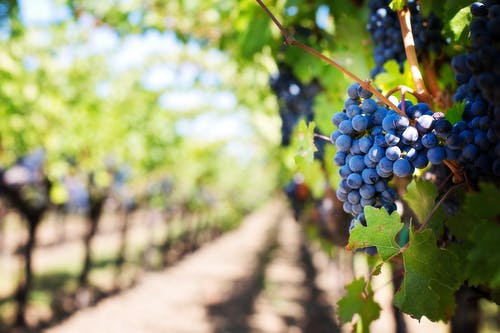



Article by: Hari Yellina
In the aftermath of fires, a promising new technology could aid grape growers in recovering from smoke taint. According to University of Adelaide academics, this could be the answer to an issue that has resulted in destroyed and smoke-affected fruit, as well as the loss of entire vineyards in certain situations. Lead researcher and author Kerry Wilkinson of the School of Agriculture, Food and Wine said in a study published in the Australian Journal of Grape and Wine Research that the use of activated carbon fabric bags in limiting the uptake of smoke by grapes showed encouraging results. “These prevented over 95% of the aromatic chemicals responsible for the disagreeable smoky, ashy flavours associated with smoke taint from entering into grapes during exposure to smoke,” she added.
“Smoke taint occurs when smoke from bushfires drifts onto vineyards and remains for long periods of time, absorbing volatile chemicals inherent in smoke.” It can drastically affect the composition and sensory qualities of wine, resulting in smoky, medicinal, and burnt rubber scents and flavours, as well as a drying, ashy aftertaste. Bushfires in Australia caused an estimated 4 percent of Australian wine grapes to be lost due to smoke taint in 2020, while in the United States, some of the greatest wildfires in California’s history reduced grape harvests by roughly 14 percent.
The experiment was started by Peter Michael, the proprietor of the Peter Michael winery in Sonoma County, California, and entailed the application of smoke to bunches of Mataro grapes that were first encased in bags constructed from various activated carbon textiles (felt, light cloth and heavy cloth). Sensory study of the resulting wines revealed that those generated from grapes encased in AC cloth couldn’t be distinguished from control wine, which was made from grapes that hadn’t been exposed to smoke. Professor Wilkinson pointed out that using this method on a large scale has limitations. “There are a few flaws that we still need to address: first, the AC materials investigated were prone to tearing and had to be handled with care to avoid tearing.”
“Also, the labour expense of putting AC fabric bags to individual grape bunches on a commercial scale is excessively expensive and, at this point, perhaps only practicable for ultra-premium grapes.” However, she stated that these findings indicated proof-of-concept, and that they want to build a more useful, cost-effective application for commercial vineyards. A more durable AC-based netting that may be placed to the grapevine fruit zone has been presented as a viable option. This would be significantly more cost-effective and provide twofold protection from birds, but any influence on photosynthesis, fruit composition, and disease pressure caused by shading and reduced airflow would need to be investigated, according to Prof Wilkinson.
It was also necessary to assess the possibility of AC fibre remnants remaining in the vineyard or in the finished wine. “However, the application of AC fabric appears to be the most viable vineyard-based technique for eliminating smoke taint,” Prof Wilkinson said. It has the potential to solve an issue that has become a global plague for growers. Other techniques that mitigate smoke-tainted grapes or wine and are linked with probable loss of valuable wine constituents might be preferable to initial uptake of smoke volatiles by grapes.